Sustainable Landscaping
In the early 1900’s, the peninsula of land that the Museum occupies was engineered by landfilling what was once a part of Lake Michigan with coal ash, clay, dirt and household waste. In 1998, when Lake Shore Drive was rerouted west of the Museum, acres of the museum campus were landscaped with impervious paved walkways, turf grass and a mix of native and non-native trees, annuals and perennials, resulting in landscaping that required excess fertilization and regular watering to maintain. Additionally, the poor soil quality and low plant diversity had discouraged biodiversity and a healthy ecosystem.
In an effort to support the Museum’s goal of a sustainable facility and better connect to the regional landscape, the Museum hired landscape architecture firm site design group, ltd. to develop a Landscape Masterplan. The Field Museum of Natural History Landscape Masterplan endeavors to expand the scope of The Field Museum’s exhibits, programs, and mission by fostering growing community awareness of ecological processes, sustainable practices, and landscape restoration. This project envisions a Field Museum property and Museum Campus that participates in larger ecological systems and landscape patterns, a networking which has the potential to improve the overall ecological health of the City of Chicago’s lakefront, catalyze additional sustainable landscape design and management at the regional level, and furnish new interpretive and exhibit opportunities which will bolster the museum’s mission. The first phase of implementation encompasses the South Terraces, including the Rice Native Gardens, described below. Installation of the Rice Native Gardens will continue in 2017 when construction work begins on the North Terraces.
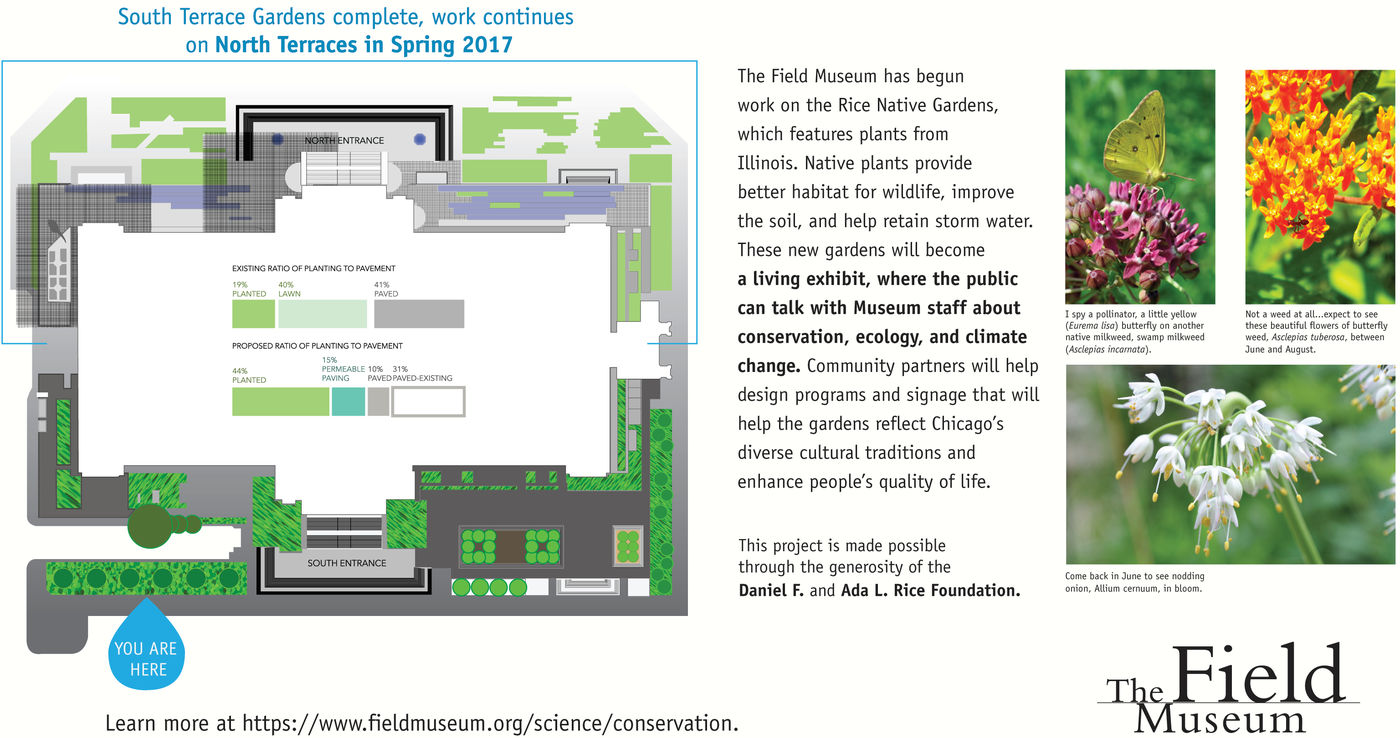
Introducing the Rice Native Gardens
In the late summer and early fall of 2016, the Museum’s grounds began a historic transformation, thanks to the generosity of the Daniel F. and Ada L. Rice Foundation, with new flora planted throughout the southern terraces of the museum. The Rice Native Gardens will showcase the Museum’s commitment to conservation and community, providing the Museum Campus’ 3.5+ million annual visitors the ability to enjoy and learn about the diversity of native plants, and the wildlife they support. The Field Museum and Shedd Aquarium continue to integrate culture and nature all along the Lakefront, as described in the landmark 1909 Plan of Chicago, adding important links to the green corridor developing with Northerly Island, Lurie Gardens, Grant Park, the Burnham Wildlife Corridor and the Millennium Reserve.
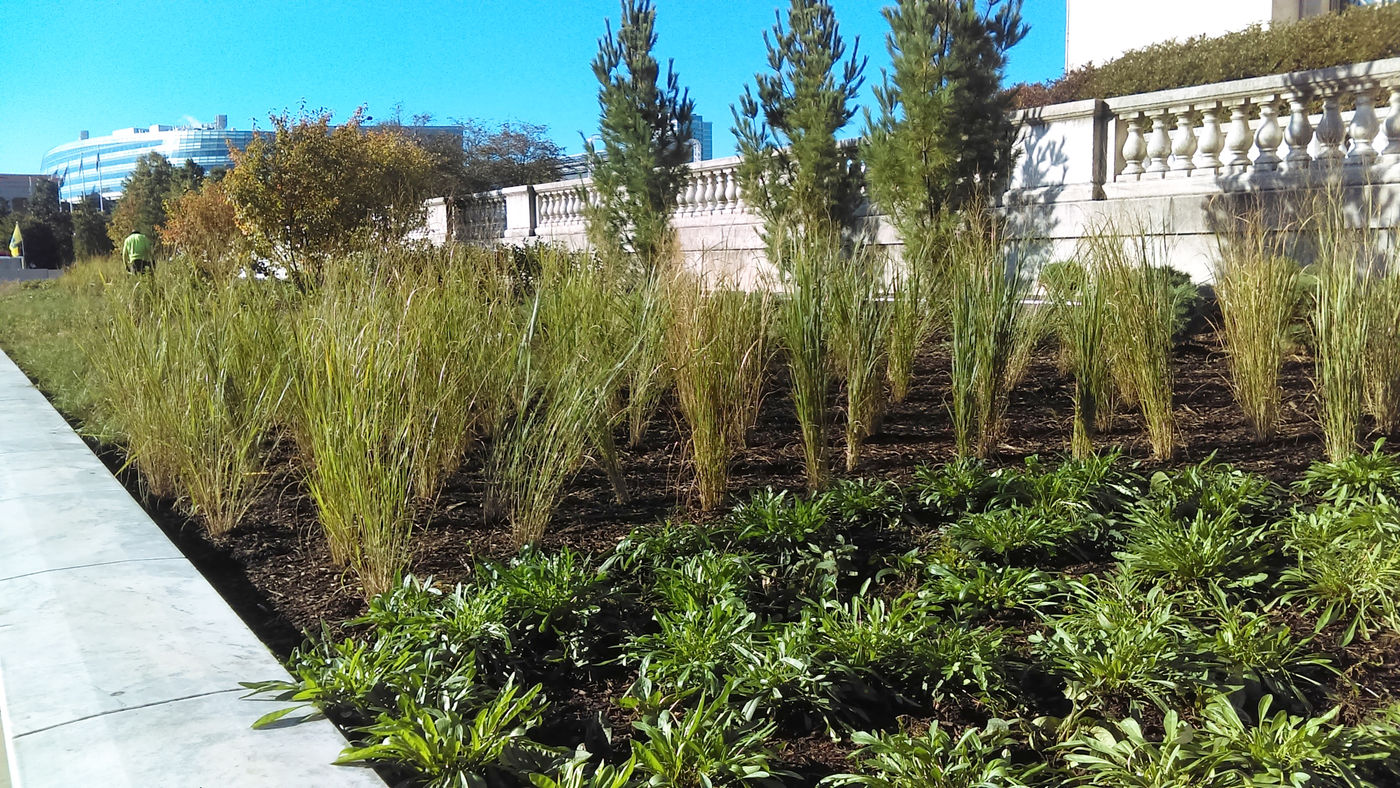 The Museum’s history and mission will be at the forefront of this ambitious project. Chicago's legendary growth after the Great Fire resulted in a building boom downtown, and the cinders and ash from the furnaces of the buildings downtown provided landfill that was then used to build the Museum's site in Lake Michigan. New plantings will foster the growth of soil organisms, improving the health of the soil, while soil core analyses will provide research opportunities. The Museum conducted a baseline inventory of its grounds in 2014, those specimens and monitoring records will provide a foundation to measure and communicate biodiversity changes over time.
The Museum’s history and mission will be at the forefront of this ambitious project. Chicago's legendary growth after the Great Fire resulted in a building boom downtown, and the cinders and ash from the furnaces of the buildings downtown provided landfill that was then used to build the Museum's site in Lake Michigan. New plantings will foster the growth of soil organisms, improving the health of the soil, while soil core analyses will provide research opportunities. The Museum conducted a baseline inventory of its grounds in 2014, those specimens and monitoring records will provide a foundation to measure and communicate biodiversity changes over time.
Last but certainly not least, the Museum has brought neighboring communities into the design process. Their input is helping to determine landscape interpretation and to shape educational programming, ensuring the gardens reflect Chicago’s diverse culture and enhance people’s quality of life.
Benefits of Native Landscaping
- Enhances the Museum visitors experience by transforming the campus into a living exhibit where Museum staff can engage the public in discussions on conservation, ecology and climate change. It also extends self-directed learning time, as the grounds are not subject to Museum hours of operation.
- The Rice Native Gardens will improve the Museum’s LEED Gold rated operations and maintenance while lessening the Museum’s impact on the environment. After establishment, maintenance requirements will greatly decrease, as the gardens will require watering only during severe drought. The replacement of turf grass with native prairie plants and permeable pavers will increase storm water retention and carbon absorption, improve storm water quality draining into Lake Michigan by reducing fertilizer usage, and reduce urban heat island effect. Additionally, deep-running root systems will help aerate the soil, which can better retain rainwater, again reducing the need for additional watering. To learn more about the relationship between soil and roots, visit Underground Adventure on the ground floor of the Museum.
- Provides refuge to migratory birds and animals. By establishing land in a link of corridors, these fauna can find a safe place to rest and forage on their journey. For more reading on preserving landscapes, check out E.O.Wilson’s Half Earth Project.
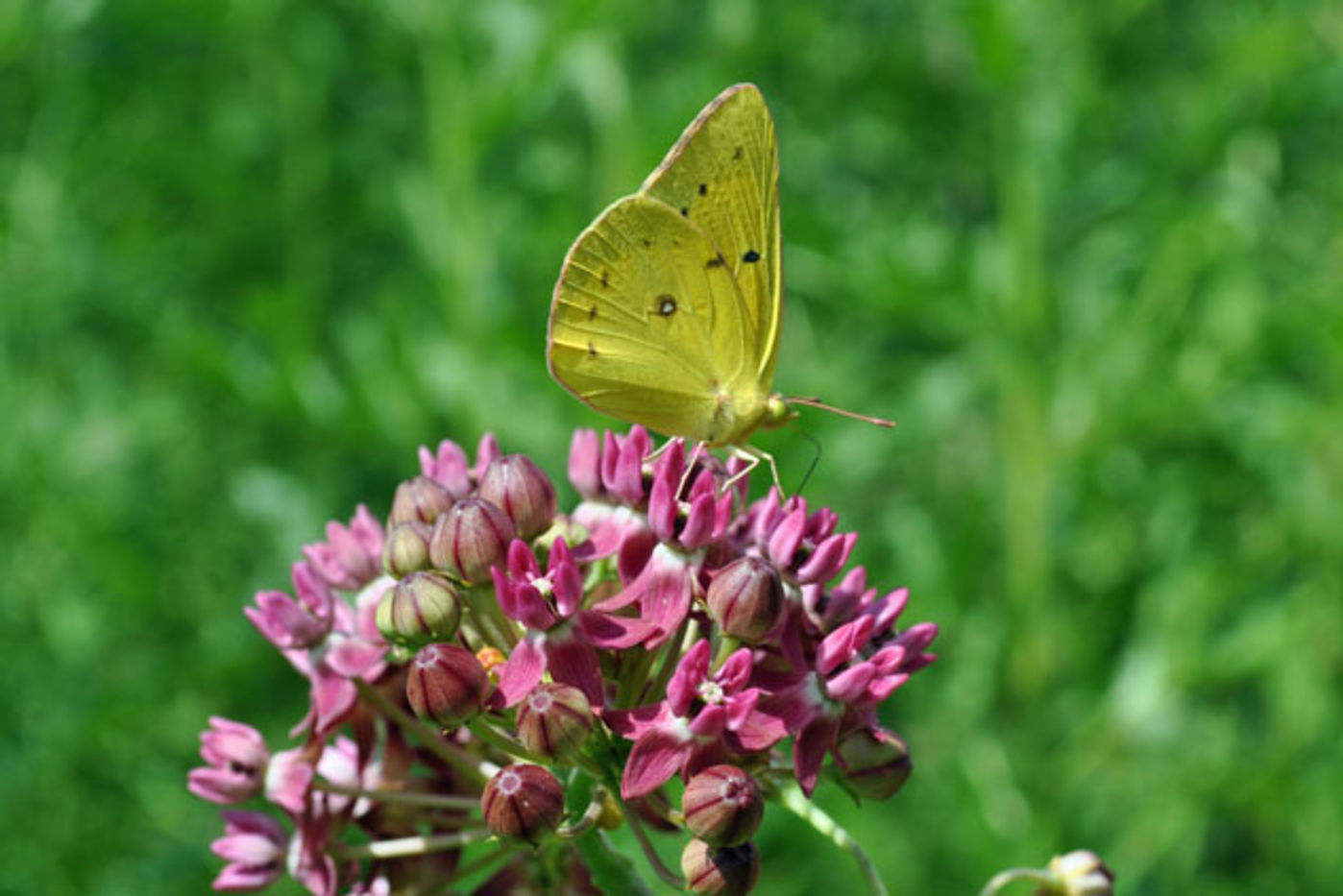
Visit The Field Museum’s Keller Science Action Center webpage to learn about ongoing efforts to extend the message of biodiversity and conservation outside the Museum walls along the south Lakefront and through the Calumet region, as well as the Monarch Conservation webpage to learn how the Rice Native Gardens' butterfly seeding garden complements larger regional efforts to protect this vanishing icon. Other resources include downloadable versions of museum created field guides, such as "Illinois- Shrubs of the Chicago Region" and "Illinois - Rice Foundation Native Gardens."
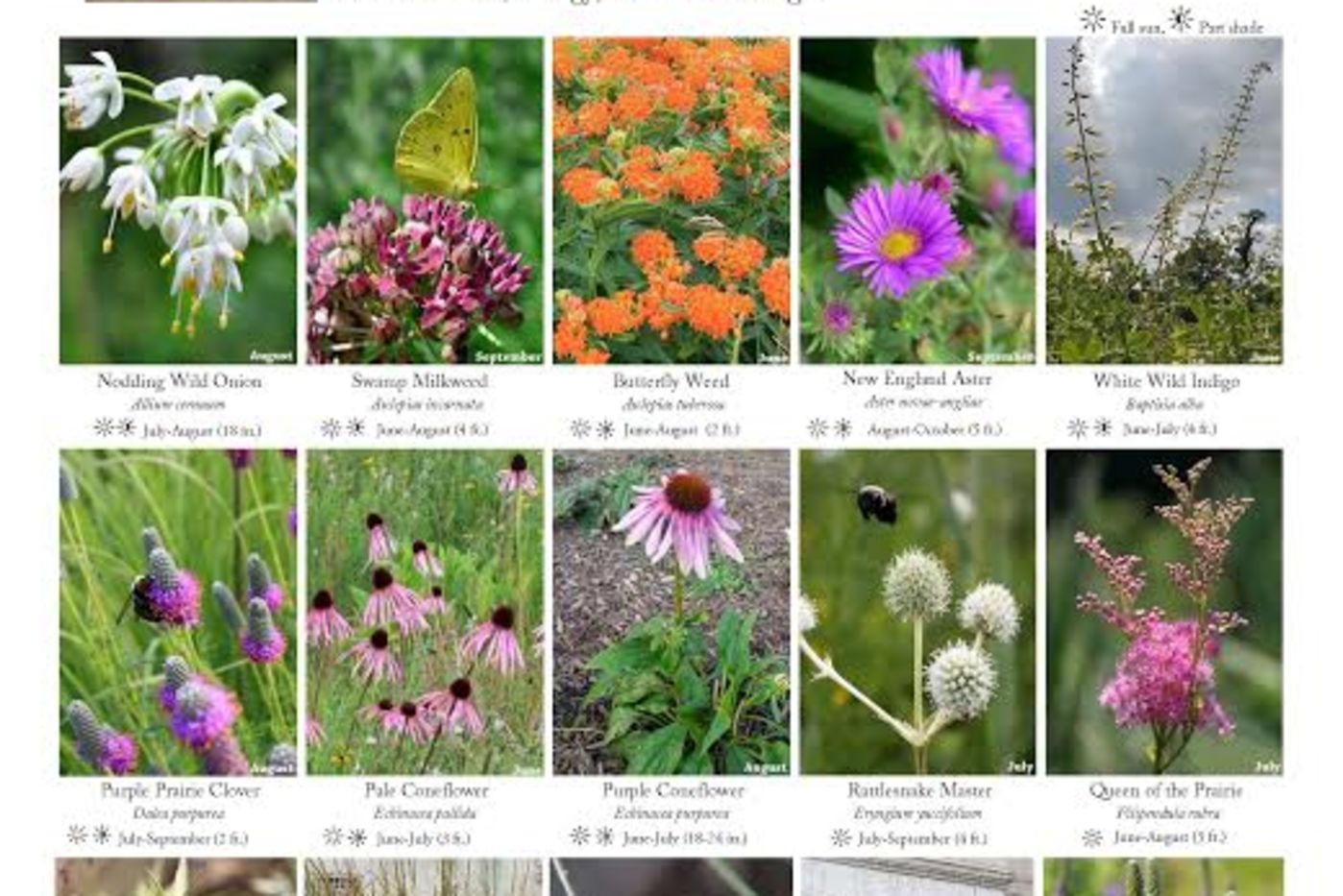
For a list of the species being introduced to the grounds, please refer to the list below. Where available, links have been added to sites where you can learn more about each plant. The common name will take you to the Chicago Botanic Garden webpage, with specification info and photos. The scientific name, in italics, will take you to the Field Museum's Emu collections database, which catalogues specimens contained in the museum archives, some collected as far back as the 1800's.
Plants found in the Terrace Gardens
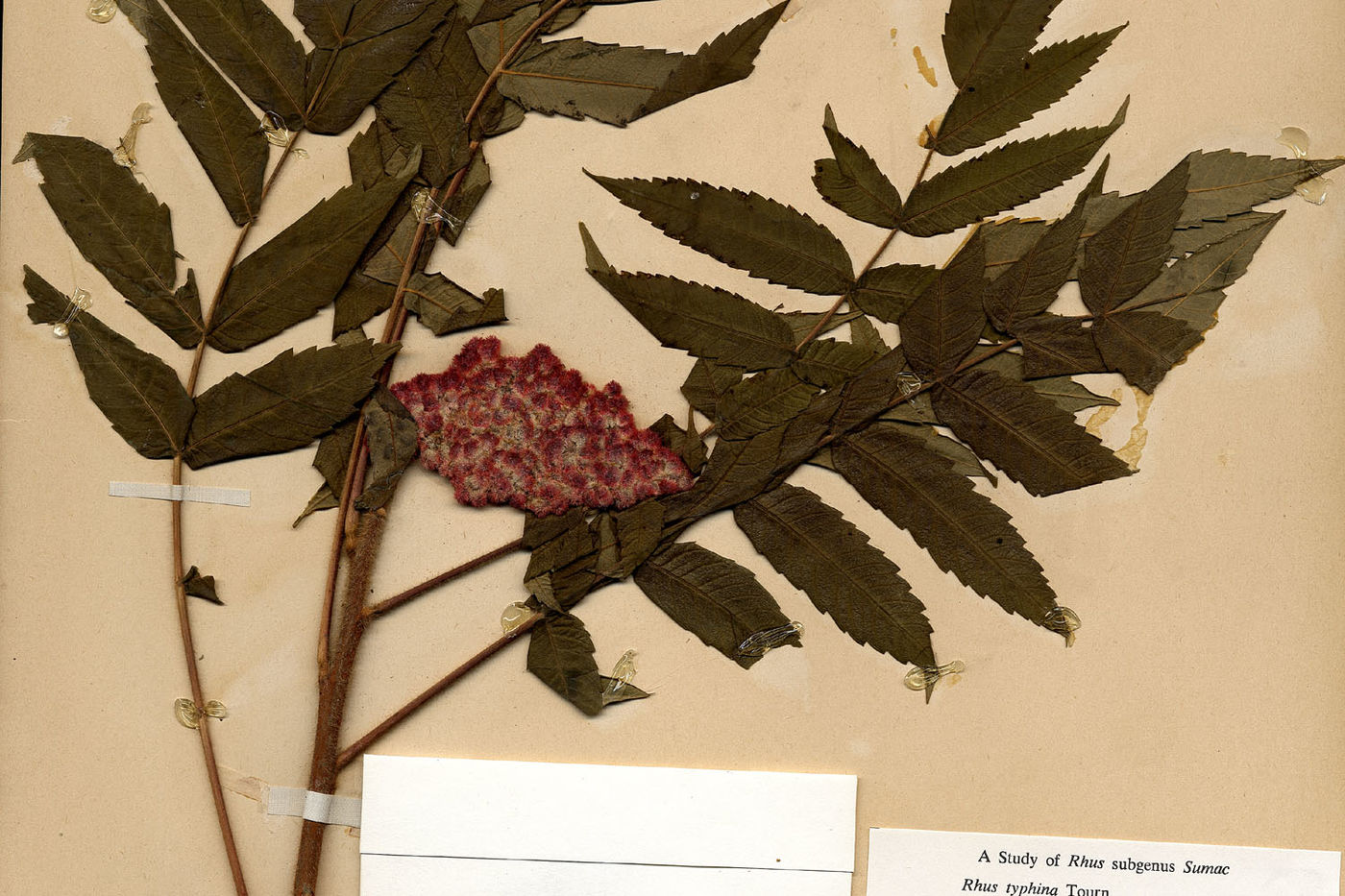
Ornamental Trees & Shrubs
- Allegheny Serviceberry Amelanchier laevis
- Eastern Rosebud Cercis canadensis
- White Pine ‘Louie’ Pinus strobus ‘Louie’
- Black Chokeberry Aronia melanocarpa ‘Iroquois Beauty’
- Red-osier Dogwood Cornus sericea ‘Alleman’s’
- Yellow Dogwood Cornus sericea ‘Bud’s Yellow’
- Grey Owl Red Cedar Juniperus virginiana ‘Grey Owl’
- Dwarf Eastern White Pine Pinus strobus ‘Nana’
- Staghorn Sumac Rhus typhina ‘Tiger Eyes’
- Cranberry Bush Viburnum Viburnum trilobum ‘Redwing’#
Grasses
- Plains Oval Sedge Carex brevior
- Pennsylvania Sedge Carex pensylvanica
- Tufted Hair Grass Deschampsia caespitosa ‘Goldtau’
- Purple Love Grass Eragrostis spectabilis
- June Grass Koeleria cristata
- Prairie Dropseed Sporobolus heterolepis#
Perennials
- Anise Hyssop Agastache foeniculum
- Nodding Wild Onion Allium cernuum
- Wild Ginger Asarum canadense
- Lance-leaf Coreopsis Coreopsis lanceolata
- Shooting Star Dodecatheon meadia
- Purple Coneflower Echinacea purpurea
- Prairie Smoke Geum triflorum
- Sneezeweed Helenium autumnale ‘Can Can’
- Ox Eye Sunflower Heliopsis helianthoides
- Rough Blazing Star Liatris aspera
- Marsh Blazing Star Liatris spicata ‘Kobold’
- Horse Mint Monarda punctata
- Hairy Beardtongue Penstemon hirsutus
- Black-Eyed Susan Rudbeckia fulgida var. sullivantii
Plants found in both Terrace and Butterfly Gardens
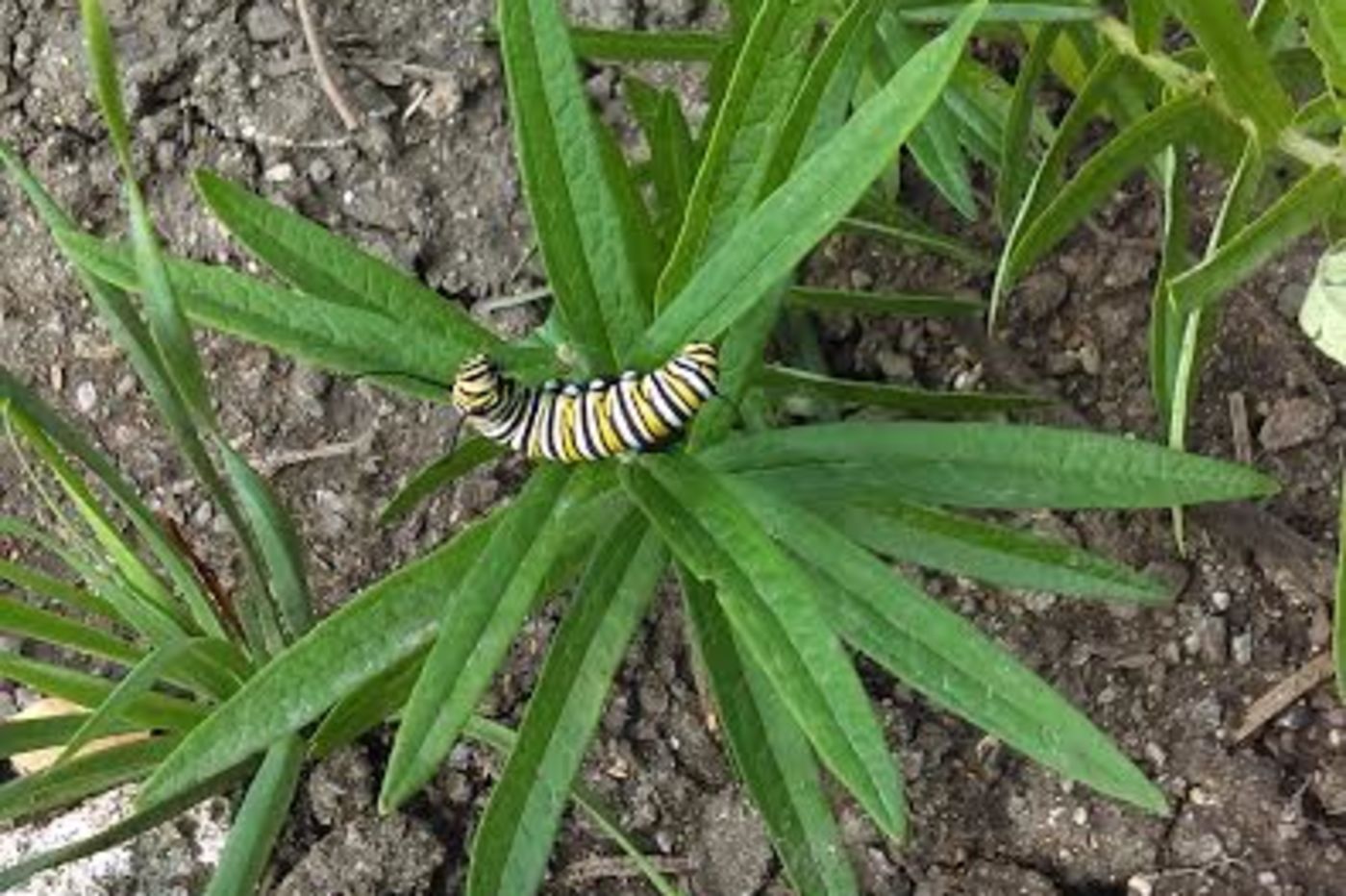
Grasses
- Switch Grass Panicum virgatum
- Little Bluestem Schizachyrium scoparium#
Perennials
- Swamp Milkweed Asclepias incarnata
- Butterfly Weed Asclepias tuberosa
- Smooth Aster Aster laevis
- New England Aster Aster novae-angliae ‘Purple Dome’
- White Wild Indigo Baptisia alba
- Purple Prairie Clover Dalea purpurea
- Pale Purple Coneflower Echinacea pallida
- Rattlesnake Master Eryngium yuccifolium
- Joe-Pye Weed Eupatorium purpureum
- Queen of the Prairie Filipendula rubra
- Sweet Black-Eyed Susan Rudbeckia subtomentosa
- Stiff Goldenrod Solidago rigida
- Hoary Vervain Verbena stricta
Plants found in the Butterfly Seeding Garden
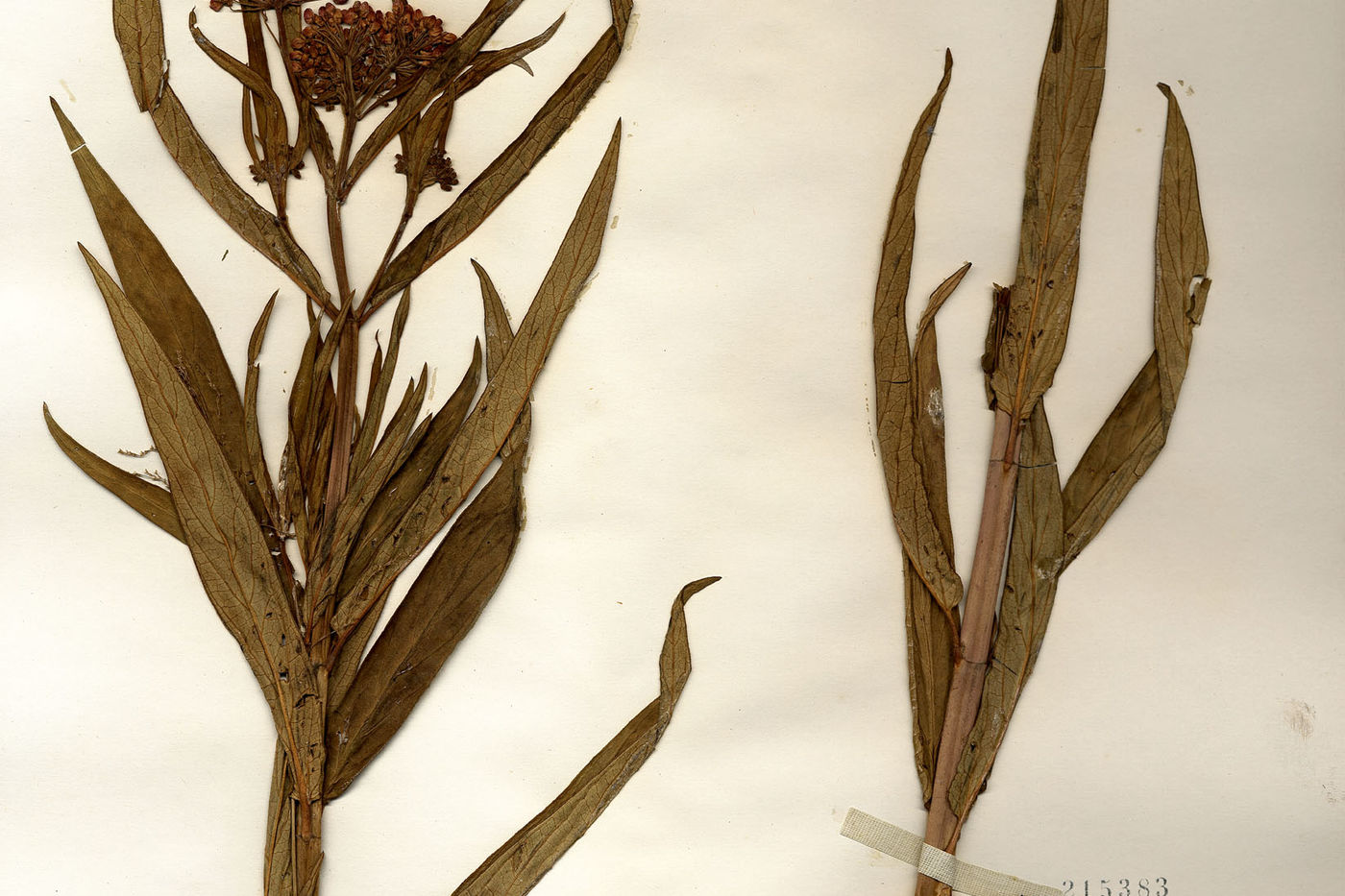
Grasses
Perennials
- Big-Leaved Aster Aster macrophyllus
- Woodland Sunflower Helianthus divaricatus
- Heart-Leaved Meadow Parsnip Zizia aptera
Around the Museum Campus
Edible Treasures Garden
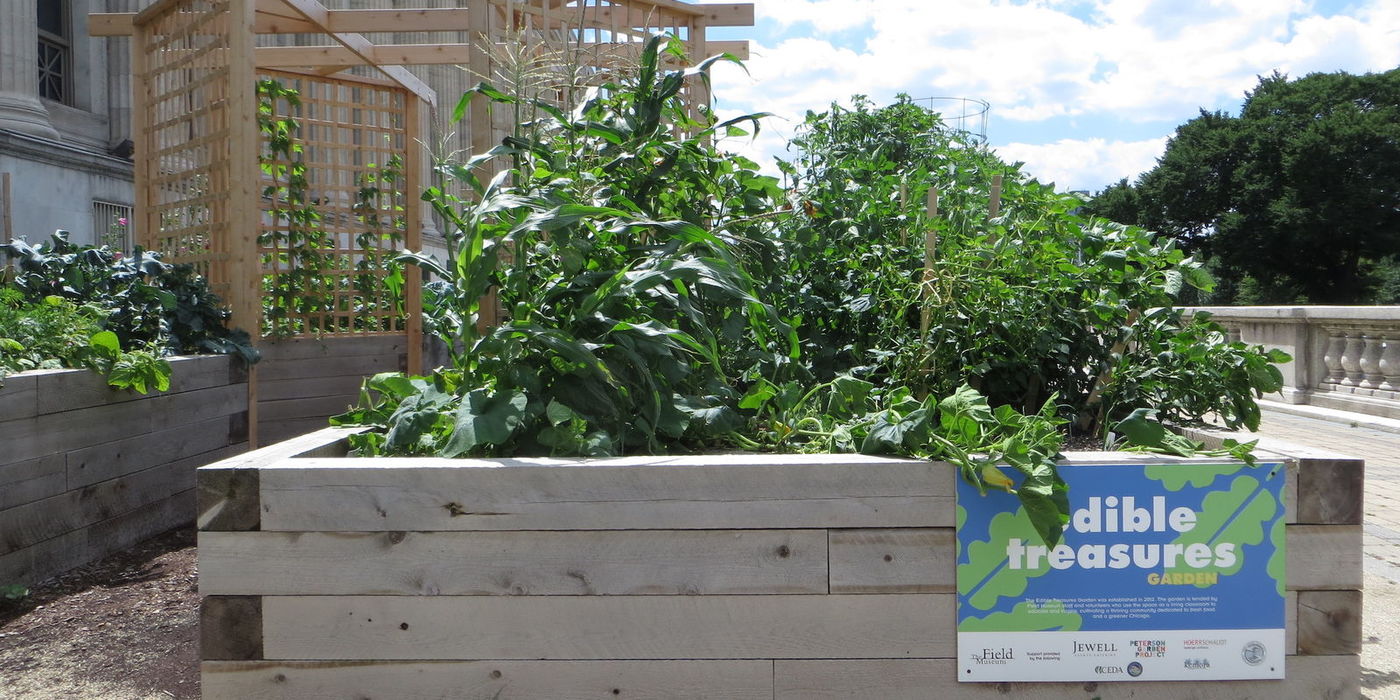
For an educational institution like The Field Museum, extending museum space to the outdoors is an opportunity to further enhance the Museum visitor’s experience. The Edible Treasures Garden, on the Museum's West Terrace, already provides Museum Campus visitors with an example of how healthy and organic food can be grown anywhere, allowing them to have greater food security and a healthier lifestyle.
The Shedd Aquarium
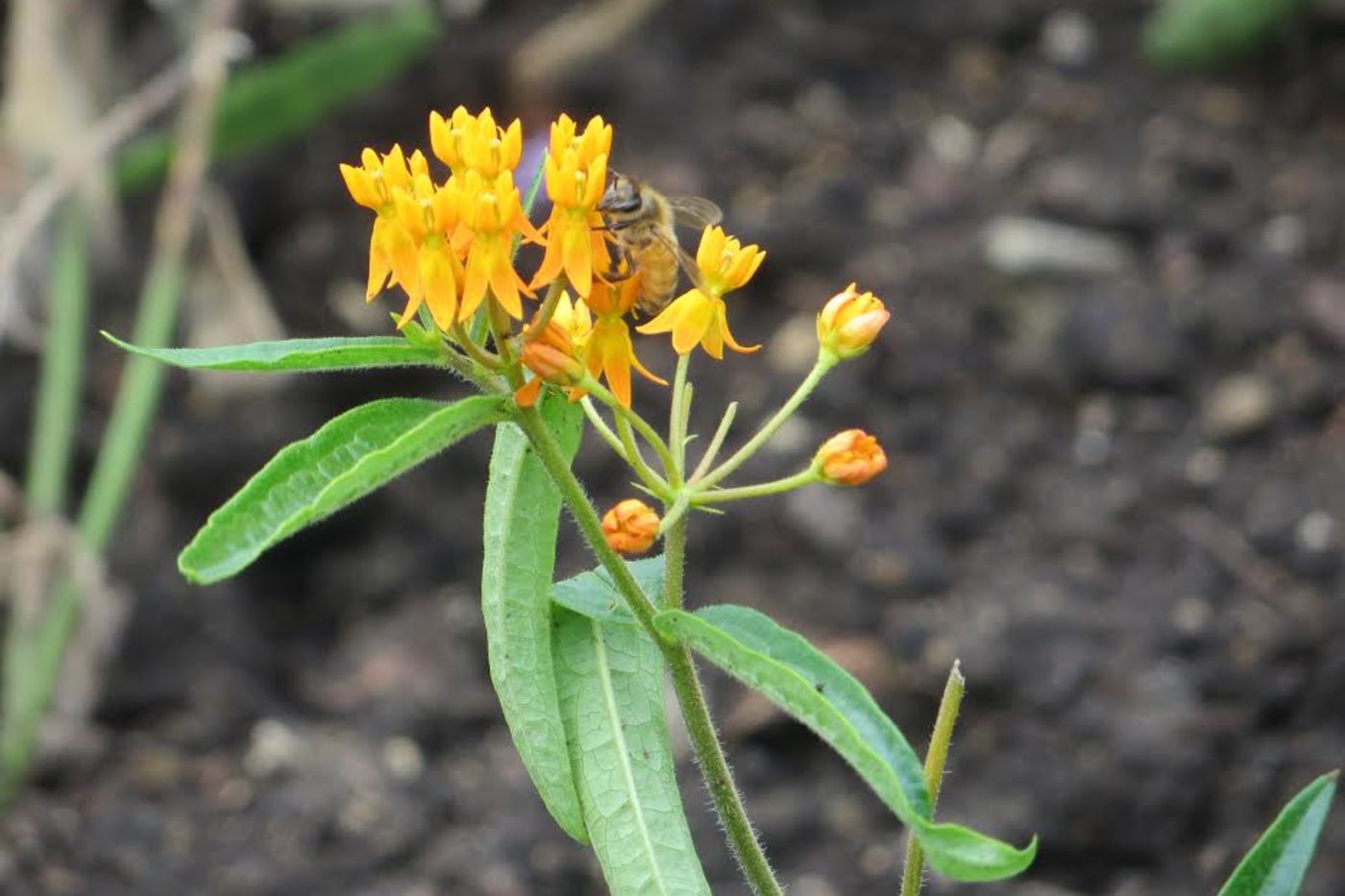 Much like The Field Museum, neighboring Shedd Aquarium shares in the philosophy of sustainable practices and extending that commitment outside of the institution's walls. The Shedd’s outdoor space is also landscaped with native plants that provide habitat for many species of birds and insects, including a migratory bird garden and on-site apiary. Also like The Field Museum, the Shedd operates its own organic produce garden, without the use of pesticides or synthetic fertilizers. Additionally, the Shedd has a rain garden, filled with plants that have deep-running, water-loving roots to soak up excess water from rain run-off that might otherwise pick up debris and other pollutants before making its way into the watershed. To learn more about what the Shedd is doing to lessen their impact on the environment, check out the Sustainable Practices of the Shedd Gardens .
Much like The Field Museum, neighboring Shedd Aquarium shares in the philosophy of sustainable practices and extending that commitment outside of the institution's walls. The Shedd’s outdoor space is also landscaped with native plants that provide habitat for many species of birds and insects, including a migratory bird garden and on-site apiary. Also like The Field Museum, the Shedd operates its own organic produce garden, without the use of pesticides or synthetic fertilizers. Additionally, the Shedd has a rain garden, filled with plants that have deep-running, water-loving roots to soak up excess water from rain run-off that might otherwise pick up debris and other pollutants before making its way into the watershed. To learn more about what the Shedd is doing to lessen their impact on the environment, check out the Sustainable Practices of the Shedd Gardens .
Northerly Island
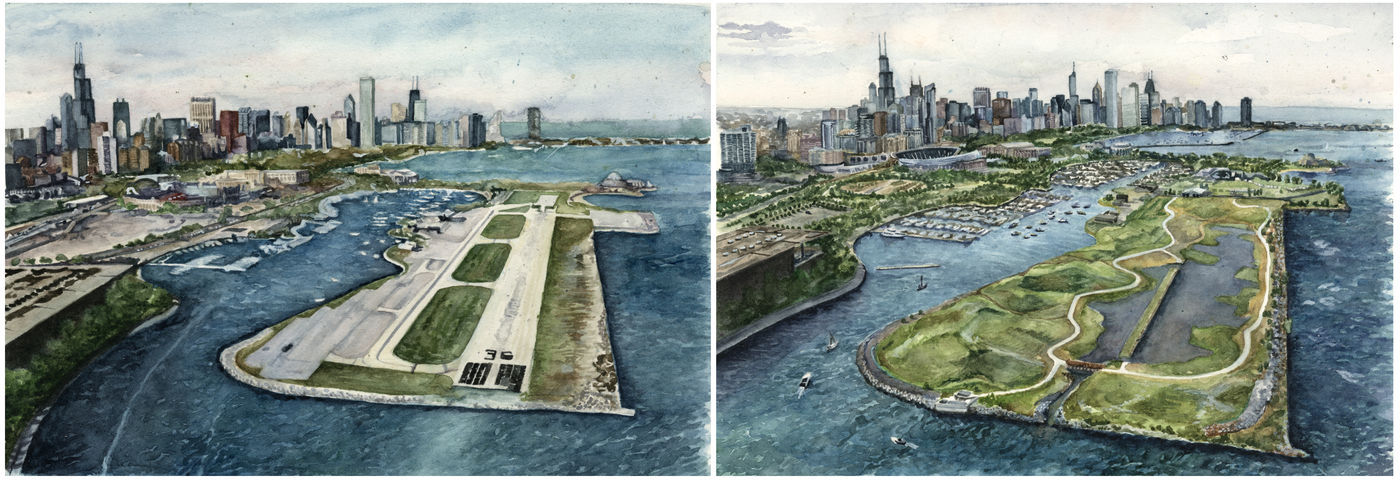
Envisioned by its designer, Daniel H Burnham, to be one in a series of five man-made islands in the Chicago lakefront extending from Grant Park to Jackson Park, Northerly Island is a 91-acre peninsula in the heart of the Museum Campus. It reached its current size in the 1930’s, and was selected as the site for Chicago’s 2nd World’s Fair. The bridge to the island was removed in the 1930’s, and the causeway was built connecting the island to mainland Burnham Park. The peninsula served as the home of Meigs Field, a single-strip airport adjacent to Chicago’s busy downtown business district from 1947 to 2003. After the 50-year lease expired, the City of Chicago, the Chicago Park District and numerous civic organizations agreed that the peninsula should return to parkland, culminating in the creation of a Northerly Island Framework Plan. A 40 acre restoration project at the southern end peninsula was initiated by the U.S. Army Corp of Engineers in 2012 in order to restore lacustrine, coastal wetland, and other coastal plant habitats in support of Great Lakes fishes, amphibians, reptiles, along with resident and migratory birds. The project includes five years of plant establishment and monitoring to support the fish, macroinvertebrates, reptiles, and amphibians, as well as the resident and migratory birds. Today, Northerly Island closely resembles Daniel Burnham’s vision, with prairie grasses taking root, beautiful strolling paths, casual play areas, a harbor, lagoon, beach, green space and spectacular views of the City skyline and lakefront. Learn about the Chicago Park District's current activities on Northerly Island.